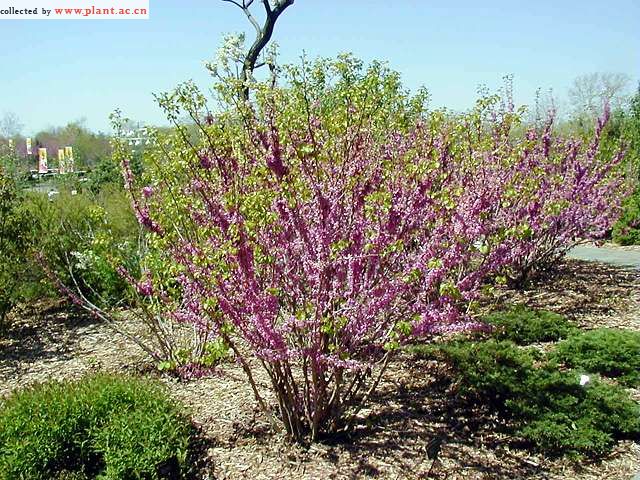Cercis chinensisChinese redbud
科:蝶形花科
Family:fabaceae
属:紫荆属
common name:Chinese redbud
introduce:Plant Type: Tree
Family: Fabaceae
Missouri Native: No
Native Range: Central China
Height: 8 to 15 feet
Spread: 6 to 12 feet
Bloom Time: March - April
Bloom Color: Rosy purple
Sun: Full sun to part shade
Water: Medium moisture
Maintenance: Medium
General Culture:
Easily grown in average, medium wet, well-drained soil in full sun to part shade. Part shade is best in hot climates. Dislikes dry soils and heavy clays. Since this tree does not transplant well, it should be planted when young and left undisturbed. Not reliably winter hardy in the St. Louis area where it should be planted in a protected location.
Noteworthy Characteristics:
Although in its native habitat Chinese redbud will often grow as a tree to 50 tall, in cultivation in the U.S. it usually grows much smaller as an open, multi-stemmed shrub from 8-15 tall. It is similar to our native redbud (Cercis canadensis - H550), except Chinese redbud has larger rose-purple flowers, glossier leaves with more deeply cordate leaf bases, longer seed pods and variable but usually less attractive fall color. Notwithstanding these differences, the two species can be difficult to distinguish. Chinese redbud is less winter hardy, however, and the native species is a more reliable selection for the St. Louis area. Clusters of tiny, rose-purple, pea-like flowers bloom profusely on the stems and branches for 2-3 weeks in early spring (March-April) before the foliage emerges. Heart-shaped green leaves are attractive during the growing season, but only at their best will turn a respectable yellow in fall. Pendulous, flat, bean-like, seed pods (to 5" long) resembling snow peas appear in late spring after flowering. Regardless of species, redbuds are true harbingers of spring.
Chinese redbud seems to be less affected by the common diseases and pests of our native redbud. Susceptible to winter damage and/or kill in the St. Louis area, particularly if sited in exposed areas.
Uses:
Excellent shrub for lawns, woodland gardens, shrub borders or naturalized areas. Effective planted as a specimen or in groups. Frequently planted as a street shrub/tree in residential areas.
